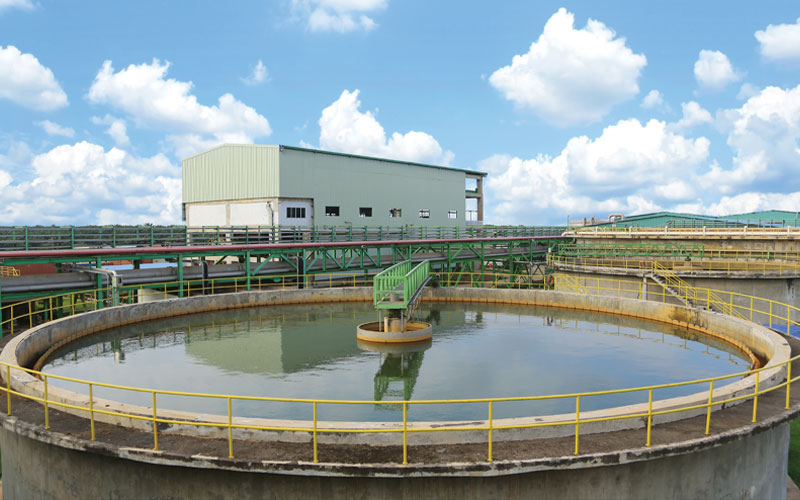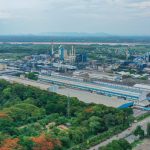APP Group is strengthening its commitment to water conservation through a circular bio-economy model that emphasizes resource efficiency and waste minimization. A key element to this approach is the innovative reuse of biosludge—a byproduct of wastewater treatment that is utilized as a renewable energy source, creating a closed loop. Another water conservation strategy used by the mill is through a process intelligence system to monitor water usage in its operation. With these focused strategies, APP Group has already achieved a 17% reduction in water intensity—bringing it down from 33 m³ per ton of product equivalent in 2018 to 27.3 m³. In an exclusive interview with Paper Mart, Ms. Letchumi Achanah, Head of Stakeholder Engagement & Advocacy at APP Group, reveals that the company aims to achieve a 30% reduction in water intensity by 2030.

Paper Mart: How has your understanding or approach to water circularity evolved over time? How close are you to achieving it?
Letchumi Achanah: APP’s approach to water circularity has matured over time into a comprehensive and proactive strategy that integrates sustainability, operational efficiency, and environmental stewardship. Initially focused on water as a critical operational input, APP now recognizes it as a vital and strategic resource that must be managed responsibly to ensure long-term availability for both communities and business continuity.
APP began by implementing flow meters at water intake points to continuously monitor usage. This is a foundational step in managing water more efficiently and making data-driven decisions. APP has evolved to consider ecological and social impacts when sourcing water. By avoiding water-stressed areas, the company demonstrates a commitment to sustainable sourcing. It does not even conduct water scarcity assessments because it proactively avoids high-risk regions altogether.
A significant milestone in APP’s journey toward circularity is the reuse of water within operational processes. By reclaiming water used in heating and cooling, APP reduces its dependency on fresh water sources and minimizes environmental impact. APP ensures that all discharged water meets regulatory standards through advanced effluent treatment and continuous monitoring. This reflects a shift from compliance to leadership in environmental responsibility.
APP has made substantial progress toward water circularity by embedding reuse, responsible sourcing, and regulatory compliance into its operations. The journey is ongoing, but APP’s integrated and forward-thinking practices place it close to achieving a high degree of water circularity, especially within its operational boundaries.
Watch: In Pursuit of Lesser Water Footprint
PM: Which technologies or solutions have you found most effective in reducing your freshwater consumption or increasing internal recycling?
LA: An example of our effective technologies and solutions would be our integrated approach to wastewater treatment and resource recovery. APP’s waste water treatment (WWT) units are central to the water recycling efforts. These systems use physical, chemical, and biological processes to treat wastewater, removing suspended solids and reducing chemical oxygen demand. This allows for the reuse of treated water within operations, significantly reducing the need for fresh water intake.
Part of this conversion results in biosludge—a byproduct of wastewater treatment—into a renewable energy source. After dewatering, the biosludge is mixed with coal and wood chips and used in boilers. This not only reduces coal consumption but also closes the loop by turning waste into energy, indirectly reducing water use associated with coal-based energy production.
These technologies contribute to a circular bio-economy model, where waste is minimized and resources are reused efficiently. By integrating water treatment with energy recovery, APP has created a closed-loop system that enhances both environmental sustainability and operational efficiency.

In 2023, APP consumed 265,945 megalitres of water and continued advancing its sustainability goals through a water efficiency program built on the ‘3R’ concept—Reduce, Reuse, Recycle.
PM: Have your investments in water reuse or ZLD technologies paid off in terms of savings, efficiency, or compliance?
LA: We conduct appropriate risk assessments and integrate the findings into our business planning, continuously working to conserve water by reusing and recycling it as much as possible through our 3R strategy (Reduce, Reuse and Recycle). Some initiatives to save water include reducing water consumption in production areas, reusing white water in production areas, increasing condensate return, reusing treated effluent, enhancing maintenance programs, and adopting new, more efficient technologies.
PM: Do you involve technology providers in planning or customizing your water treatment systems? Any successful collaborations worth sharing?
LA: In our operations, the primary source of water is a river located near our mill. We regularly record the river water intake in accordance with the permit for the utilization and extraction of surface water, using measuring instruments installed at the permitted coordinates. Furthermore, the river water is processed at the water treatment plant to produce water that meets the quality standards required for production. The products from the water treatment plant include pre-treatment, post-treatment, and demineralized water, each with different qualities to meet our operational needs.

We have been using the PI system to monitor water usage in each of our operations. The system collects, stores, and analyzes data in real-time and helps us identify water wastage and pinpoint the largest areas of water usage, allowing us to focus on potential efficiencies.

PM: How do you see your water use evolving in the next 5–10 years? What would “full circularity” look like in your operations? What kinds of support in terms of technology, partnerships, or policies would help you get there?
LA: APP has set a water reduction target for Sustainability Roadmap Vision (SRV) 2030, which is a 30% reduction in water intensity from the 2018 baseline year. APP aims to achieve a 30% reduction in water intensity by 2030, in comparison to 2023. Currently, water intensity stands at 27.3 m³ per ton of product equivalent, marking a 17% decrease from the 2018 baseline of 33 m³ per ton of product equivalent. By prioritizing water use efficiency in its operations, APP aims to achieve significant improvements in water resource availability and sustainability.
PM: Have you considered or implemented digital twins to simulate, monitor, or optimize your water use? What kind of improvements could such systems bring to your operations?
LA: We have been using the PI system (process intelligence system) to monitor water usage in each of our operations. The PI system collects, stores, and analyzes data in real-time. It helps us identify water wastage and pinpoint the largest areas of water usage, allowing us to focus on potential efficiencies. In the future, We will continue to develop our PI system by optimizing data integration, improving the network, visualization, and comprehensive reporting.
Also Read: ITC- PSPD Maintains Water-Positive Status for 23 Years
PM: What is your current annual water consumption, and how has the consumption reduced over the past few years? Kindly support the answer with the table below.
LA: In 2023, total water consumption in APP was 265,945 ml. Every year, our operations have a water consumption target. They will implement a water efficiency program with the ‘3R’ concept. All initiatives are registered and tracked as part of the Skill Development Activity (SDA) Program, which aims to improve operational processes by reducing water consumption, increasing production efficiency, and minimizing environmental impact. Moving forward, we will also continue to seek potential improvements and look for more efficient technologies.




